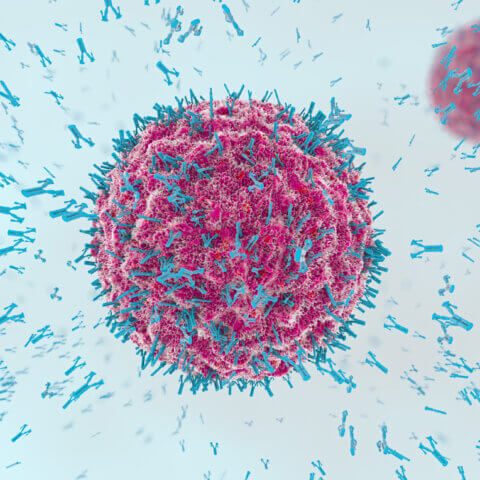Gene therapy products are typically designed to achieve therapeutic effect through long-acting or permanent changes in the human body. Due to this extended period of exposure, patients who receive gene therapies may be at increased risk of delayed adverse events. To understand and mitigate the risk of these delayed adverse events, participants in gene therapy trials may be monitored for a long-term follow-up (LTFU) period, which may be as long as 15 years. During this period, sponsors are challenged with navigating complex regulatory requirements as well as finding innovative ways to keep patients engaged for a decade or more.
Background on global LTFU requirements
The field of gene therapy is gaining traction, with over 20 gene therapy products approved and over 2,000 gene therapy clinical trials reported worldwide.[1] It is estimated that, by the year 2025, the US Food and Drug Administration (FDA) will be approving between 10 and 20 gene therapies each year.[2] Given the limited data on the long-term effects of gene therapy, however, there is still much to learn about the safety and efficacy of these products before they can be used routinely in the clinic.
In January 2020, the FDA released updated guidance on Long-term Follow-up After Administration of Human Gene Therapy Products. This document includes recommendations regarding the design of LTFU studies for the collection of data on delayed adverse events and long-term safety and efficacy following gene therapy administration.
The EMA’s Guideline on follow-up of patients administered with gene therapy medicinal products has been in effect since May 1, 2010. Similar to the FDA guidance, the EMA clinical follow-up recommendations take into consideration the risk profile of the gene therapy, as well as the underlying disease, co-morbidity, and patient characteristics. In the EU, gene therapy products are also subject to the more recent Guidelines on Good Clinical Practice specific to Advanced Therapy Medicinal Products, which were finalized in October 2019.
Determining whether LTFU is needed
To determine if a gene therapy product requires LTFU studies, sponsors answer the five questions below in sequence to determine:
- Does the gene therapy product utilize genome editing technology?
If no, move on to Question 2. If yes, all clinical protocols involving administration of the product should include LTFU observations. - Is the vector used only for ex vivo modification of cells?
If no, move on to Question 3. If yes, skip to Question 4. - Do preclinical studies show the persistence of the gene therapy product?
If no, the risk of product-related delayed adverse events is considered to be low, and LFTU observation may not be necessary. If yes, move on to Question 4. If it is not yet known whether the product persists, the FDA recommends either assuming that it does persist or performing preclinical studies in a relevant animal species. - Are the vector sequences integrated, or is the genome otherwise altered?
If no, move on to Question 5. If yes, all clinical protocols should include LTFU observations. - Does the gene therapy product have the potential for latency or reactivation?
If no, LFTU observation may not be needed. If yes, then all clinical protocols should include LFTU observations.
Evidence from preclinical studies can additionally be used to help answer questions three through five. In addition, assessment of risk should be viewed as a continuous process. As data accumulates, it may be necessary to revise existing LTFU observations or initiate them if they were not previously planned.
Figure 1. Likelihood of Commonly Used Gene Therapy Products to Modify the Genome [3]
| Product / Vector Type | Propensity to Modify Genome | Need for LFTU Observations |
| Plasmid | No | No |
| RNA | No | No |
| Poxvirus | No | No |
| Adenovirus | No | No |
| Adenovirus-associated virus* | No | Product-specific |
| Herpesvirus | No, but may undergo latency or reactivation | Yes |
| Gammaretrovirus | Yes | Yes |
| Lentivirus | Yes | Yes |
| Transposon elements | Yes | Product-specific |
| Microbial vectors for gene therapy | No, but may persist and undergo reactivation | Product-specific |
| Genome editing products | Yes, as permanent changes are made to the host genome | Yes |
*Replication-negative vectors only
Adapted from US Food and Drug Administration. Long-term Follow-up After Administration of Human Gene Therapy Products, January 2020.
Regulatory and operational considerations when designing an LTFU protocol
The FDA guidance provides recommendations on the design and conduct of LTFU observations, including considerations on characteristics of the clinical trial population, elements, and duration of LTFU observations, data collection, and reporting. It’s important to keep in mind that gene therapy products that integrate vectors and genome-editing products may require additional monitoring activities.
LTFU or surveillance plans for delayed adverse event monitoring will likely be required after product licensure. If post-licensure LTFU studies are needed, the FDA advises sponsors to submit a pharmacovigilance plan (PVP) as part of their biologics license application (BLA). The PVP should include:
- The LTFU protocol, including specific adverse events of interest to be evaluated and the duration of observation
- The statistical analysis plan
- The anticipated schedule of study milestones for any proposed or required post-marketing observational studies or clinical trials
Key takeaways
Given the limited number of patients who have received gene therapy products to date, much remains unknown about the long-term effects of these novel therapies. LTFU observations not only help sponsors and researchers understand and mitigate the risk of delayed adverse events, but also advance the body of knowledge on outcomes, providing valuable insight into how to improve the long-term safety and efficacy of gene therapy products. Premier Research has conducted over 40 gene and cell therapy trials in the past five years in multiple therapeutic areas, including oncology, hematology, neurology, and rare disease. Click here to schedule a consultation with our gene therapy experts.
[1] Shahryari A, et al. Development and clinical translation of approved gene therapy products for genetic disorders. Front Genet 2019;10:868.
[2] Gottlieb, S., M.D. (2019, January 15). Statement from FDA Commissioner Scott Gottlieb, M.D. and Peter Marks, M.D., Ph.D., Director of the Center for Biologics Evaluation and Research on new policies to advance development of safe and effective cell and gene therapies. Retrieved from https://www.fda.gov/news-events/press-announcements/statement-fda-commissioner-scott-gottlieb-md-and-peter-marks-md-phd-director-center-biologics
[3] U.S. Food and Drug Administration. Long Term Follow-up After Administration of Human Gene Therapy Products, January 2020. Available at https://www.fda.gov/media/113768/download.
Related Resources:
Real-World Data and Real-World Evidence: What Is Their Value as a Synthetic Control Arm?




